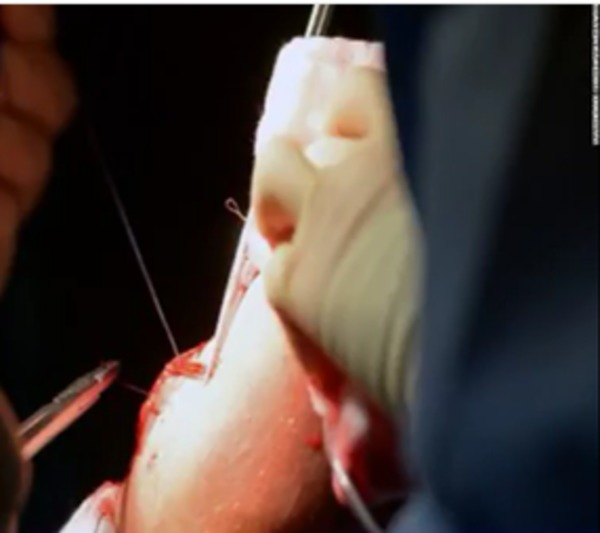By Jamie Nelson, | October 26, 2016

Swiss surgeons have been able to use cells from the nose of patients to improve their damaged knees.
Surgeons in Switzerland they have been able to successfully harvest cells from patients' nose to repair their damaged knee joints using a unique medical technique. Following the operation, the patients are said to have reported improvements in the mobility of their knees and experienced less pain.
Like Us on Facebook
According to CNN, the treatment appears to be feasible and safe. The co-author of the study Dr. Ivan Martin, a professor of biomedicine at the University Hospital Basel in Switzerland, said their experiment revealed that the new tissue, which begins to develop at the point of repair, improves in composition with time.
The study has revealed that between 2004 and 2011, more than a million Americans underwent knee surgery due to cartilage issues. Dr. Martin revealed that while the population ages, more people will require knee surgeries.
Dr. Martin explained that their procedure is successful because nasal cells have a "more reproducible capacity to form new cartilage." He noted that this had been proven in many previous studies.
"We further established that the cartilage tissue generated by nasal chondrocytes [one type of cell] can respond to physical forces (mechanical loads) similar to articular cartilage and has the 'plasticity' to adapt to a joint environment," Dr. Martin said.
During pre-tests, Dr. Martin implanted tissue into the leg joints of goats. He said the experiments revealed that the tissue efficiently integrated with the surrounding cartilage. According to Science News, this study was the first human trial for such a procedure.
Cells called chondrocytes were taken from ten patients with damaged knee joints and grown into grafts of cartilage. These patches were then implanted into the knee joints of the patients, and the results were monitored. Two years after the first surgeries were performed, the patients said they had experienced improvements in the functioning of their knees and much less pain.
Learn more details of the study in the video below:
-
Use of Coronavirus Pandemic Drones Raises Privacy Concerns: Drones Spread Fear, Local Officials Say

-
Coronavirus Hampers The Delivery Of Lockheed Martin F-35 Stealth Fighters For 2020

-
Instagram Speeds Up Plans to Add Account Memorialization Feature Due to COVID-19 Deaths

-
NASA: Perseverance Plans to Bring 'Mars Rock' to Earth in 2031

-
600 Dead And 3,000 In The Hospital as Iranians Believed Drinking High-Concentrations of Alcohol Can Cure The Coronavirus

-
600 Dead And 3,000 In The Hospital as Iranians Believed Drinking High-Concentrations of Alcohol Can Cure The Coronavirus

-
COVID-19: Doctors, Nurses Use Virtual Reality to Learn New Skills in Treating Coronavirus Patients








